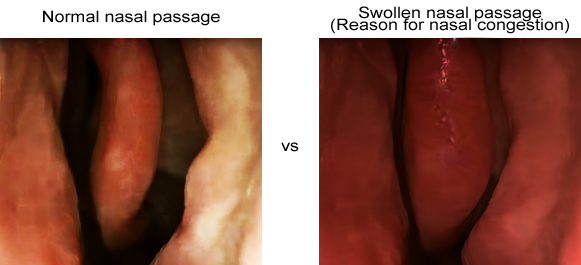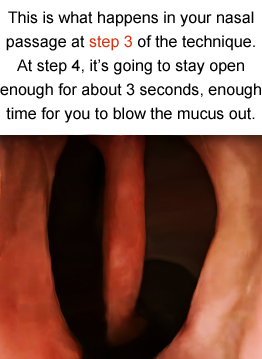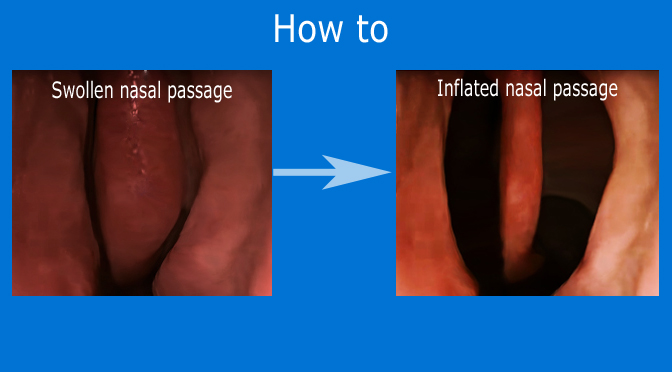There are many how-to articles about this subject on the internet, but almost all of them are talking about a theoretical way that doesn’t work at all, a way where you have to push between your eyebrows and use your tongue to push upwards. Forget that, it doesn’t work.
The best and the easiest way to be able to decongest a stuffy nose, as soon as possible, is the following:
First, you have to understand what causes a stuffy nose, because this technique is purely technical and you don’t need anything other than your hands and back-pressure from your lungs.

Nasal congestion happens because the tissues of the nasal passage are swollen, meaning that there’s much less room for the mucus and air to pass through. If there’s mucus build-up while the nasal passage is swollen, it becomes blocked and you can’t breathe (either from one or both sides of the nose).
A way to force-open the nasal passage temporarily, which will give you time to blow your nose and force the mucus out:
- Take a tissue and put it on your nose while holding it with both hands (as you would typically do when you blow your nose with a tissue).
- Press the nostrils with your index fingers (while holding the tissue pressed on the nostrils) so that they’re completely sealed and hold it like that.
- Press your lungs (trying to push the air out of your nose) as much as you can until you feel the nasal cavity inflated and unstuck (you will feel it).

- By the moment you feel the nasal cavity inflated, let off the applied pressure from your index fingers to unseal the nostrils and blow as hard as you can. It’s better to blow one nostril at a time (if both ways are blocked) or just the one that’s blocked.
- Remember, at step 4, you will have only about 3 seconds to blow your nose and force the mucus out after you let off the sealing with your fingers, so you may have to repeat the procedure to force all the mucus out.
After doing this procedure, although the tissues of the nasal cavity will continue to be swollen (reduced airflow), you will be able to breathe because the blockage from the mucus will be resolved.

